
Teacups, typically smaller than coffee cups, primarily serve for enjoying tea and are commonly made of ceramic, porcelain, or glass. Often accompanied by a saucer of the same material, they catch drips and spills during tea time, a common sight in living rooms, tea parties, and coffee shops.
Tracing back to ancient China during the Tang Dynasty (618-907 AD), the earliest teacups were handmade and simple. The Song Dynasty (960-1279 AD) saw the evolution of more sophisticated, handleless designs, meant for holding in both hands. A significant leap occurred during the Ming Dynasty (1368-1644 AD) with the introduction of handled teacups, enhancing the hot tea drinking experience and influencing many cultures.
Teacups have since become a staple in European tea culture, particularly in Britain, where tea drinking is an esteemed ritual. Here, artisans crafted intricate tea sets with handles and saucers, elevating the elegance and practicality of tea drinking.
This article will explore the fascinating origins of teacups, their various types, materials, and uses, illustrating how these vessels have evolved from basic ceramics to modern-day artistic expressions, catering to different cultures and tea-drinking traditions.
What is the history of Tea cups?
Teacups are small cups with small handles usually made of ceramic, porcelain, or glass. In family living rooms, tea parties, or coffee shops, we often see tea sets. The tea saucer, crafted from the same material as the teacup, serves the purpose of holding the cup of tea and catching any drips or spills to prevent them from spilling out.
The origin of the first cups of tea dates back to ancient China during the Tang Dynasty (618-907 AD). At that time, tea cups were still very handmade and rudimentary.
During the Song Dynasty (960-1279 AD) tea enthusiasts began to create more sophisticated tea cups. They are small, lack handles, consist of ceramic, and feature a design for holding in both hands.
Historians consider the Ming Dynasty (1368-1644 AD) as the era making significant advancements in teacup design, marking an outstanding improvement for these vessels. With the purpose of making drinking hot tea easier and more comfortable, the tea cup with a handle was born. This innovation has helped tea cups find their way into many different cultures.
The old continent of Europe is the cradle of human civilization, associated with the birth and development of tea-drinking culture.
In the early 1700s, tea saucers were also invented here. As tea culture spread along the Silk Road, the British elite considered drinking tea an important ritual. They produce elaborate and sophisticated tea sets that not only have handles but also come with saucers. The production of tea sets not only contributes to enhancing the tea-drinking experience but also brings a practical and elegant feeling to the user.
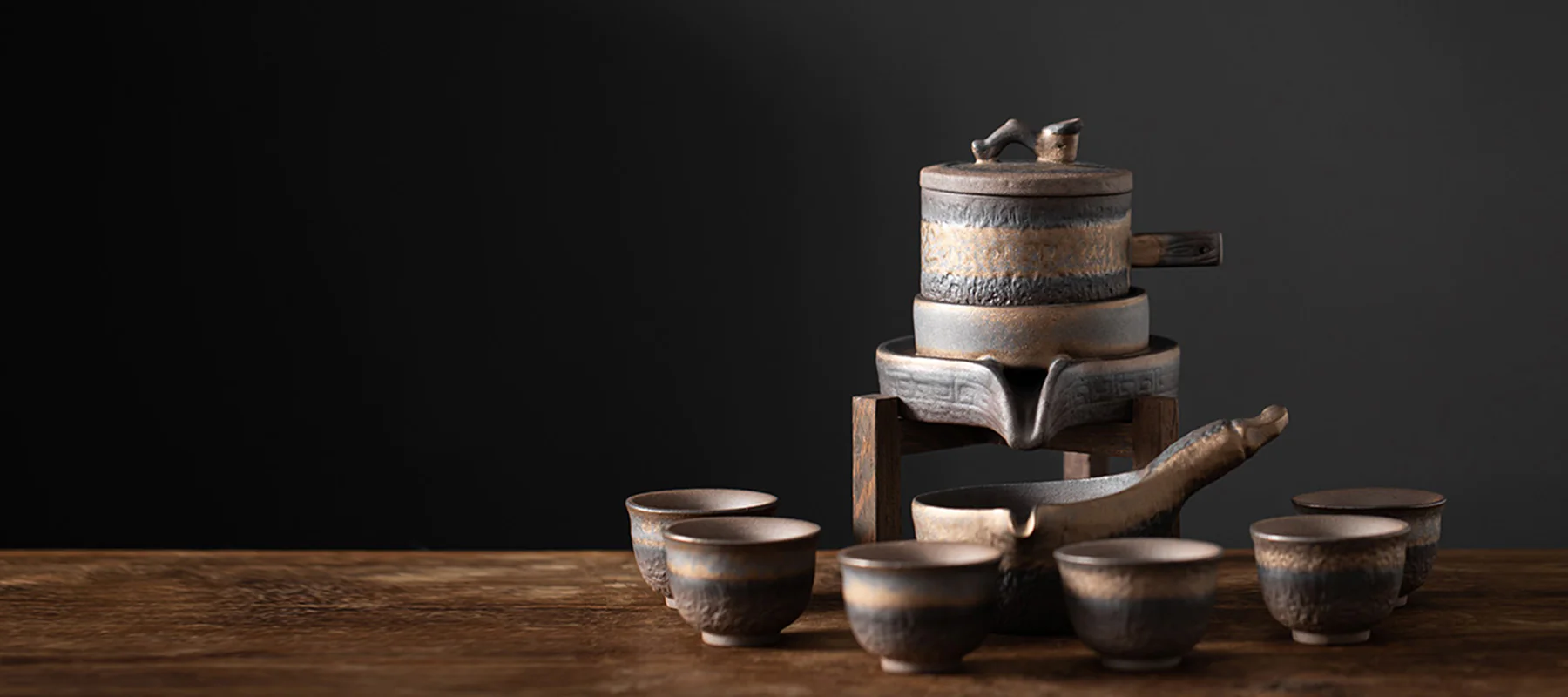
The origin of the first cups of tea dates back to ancient China during the Tang Dynasty (618-907 AD)
What are the different types of tea cups?
The variety of tea cups from their designs to their origins and uses allows users to create the perfect cup of tea. Below are some types o cups that represent tea cultures around the world.
Chinese Tea Cups (Gaiwan)
Traditional Chinese tea cups, also known as Gaiwan. They are small, handleless cups often decorated with intricate designs or beautiful patterns.
Gaiwan's materials are ussually porcelain, ceramic, or jade. Each material has its own characteristics, affecting the taste and aroma of tea.
In Chinese tea culture, people regard using the Gaiwan as a form of artistry.
Not only creating a serene and meditative tea-drinking experience but also demonstrating the unique character of the country's traditions.

Chinese Tea Cups
Japanese Tea Cups (Yunomi and Chawan)
Yunomi and Chawan are two types of cups that represent tea culture in Japan. This is a traditional, cylindrical tea cup with a handle suitable for everyday tea drinking. Yunomi cups's materials are ussually porcelain, ceramic, and stone. With a simple yet convenient design, they are the perfect choice for enjoying a variety of Japanese teas such as sencha and hojicha.
Chawan is a tea cup specially designed for use in important tea ceremonies. Chawan has a wider mouth and deeper surface than Yunomi cups. It is often made of ceramic, or porcelain, diverse in size and design. Mainly used to enjoy matcha green tea.
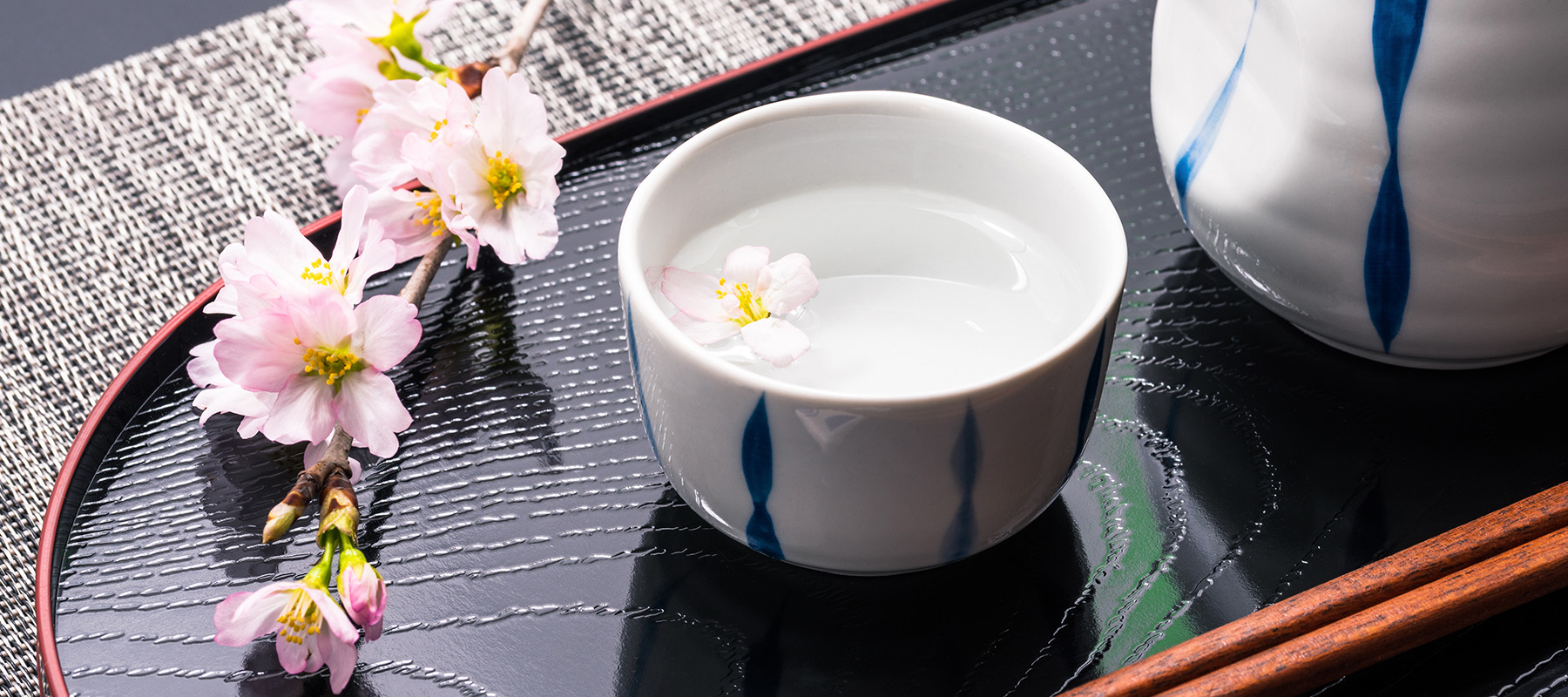
Japanese Tea Cups
British tea cups
Characteristics of the afternoon tea tradition include British tea cups. British teacups are diverse in design and material. Some materials of teacups include porcelain and bone ceramic. They are famous for their charming and sophisticated appearance. Traditional designs are adorned with elaborate, meticulous patterns, accented by gold and silver.
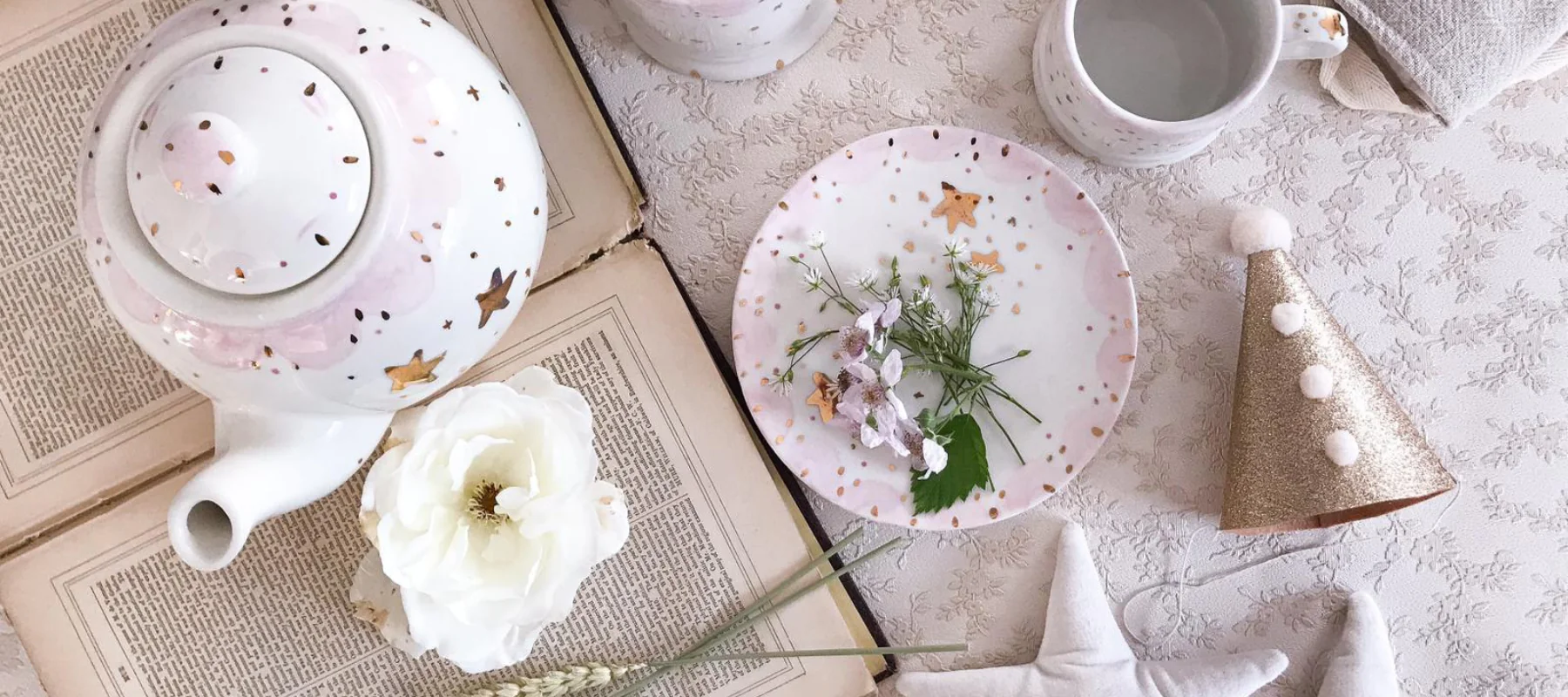
British tea cups
Moroccan Tea Cups
Moroccan tea cups are usually made from glass or ceramic. The design of the cup is usually cylindrical, with a wide bottom and a slightly narrow mouth to keep the temperature and flavor of the tea. Moroccan tea cups are often decorated and crafted with elaborate motifs, creating appeal and tradition in each cup.
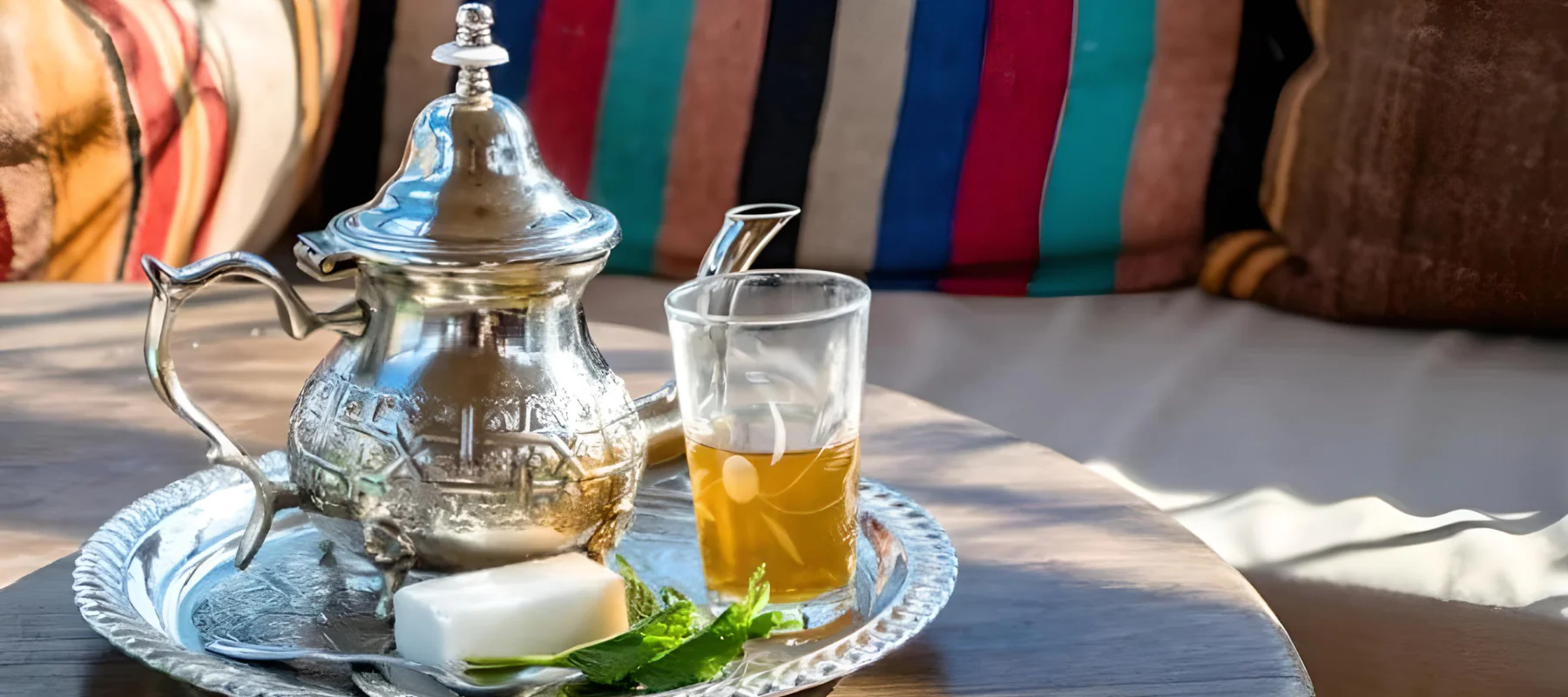
Moroccan Tea Cups
Turkish Tea Cups (Fincan)
A Turkish tea cup also known as Fincan, is a cup made of glass or ceramic. The cup has a cylindrical stem that is wide at the bottom, narrow in the middle, and widens toward the mouth. One of the main characteristics of the Turkish tea cup is its handle-less design. Unlike many Western teacups, the Turkish teacup does not have a handle and is instead crafted to hold on the saucer.
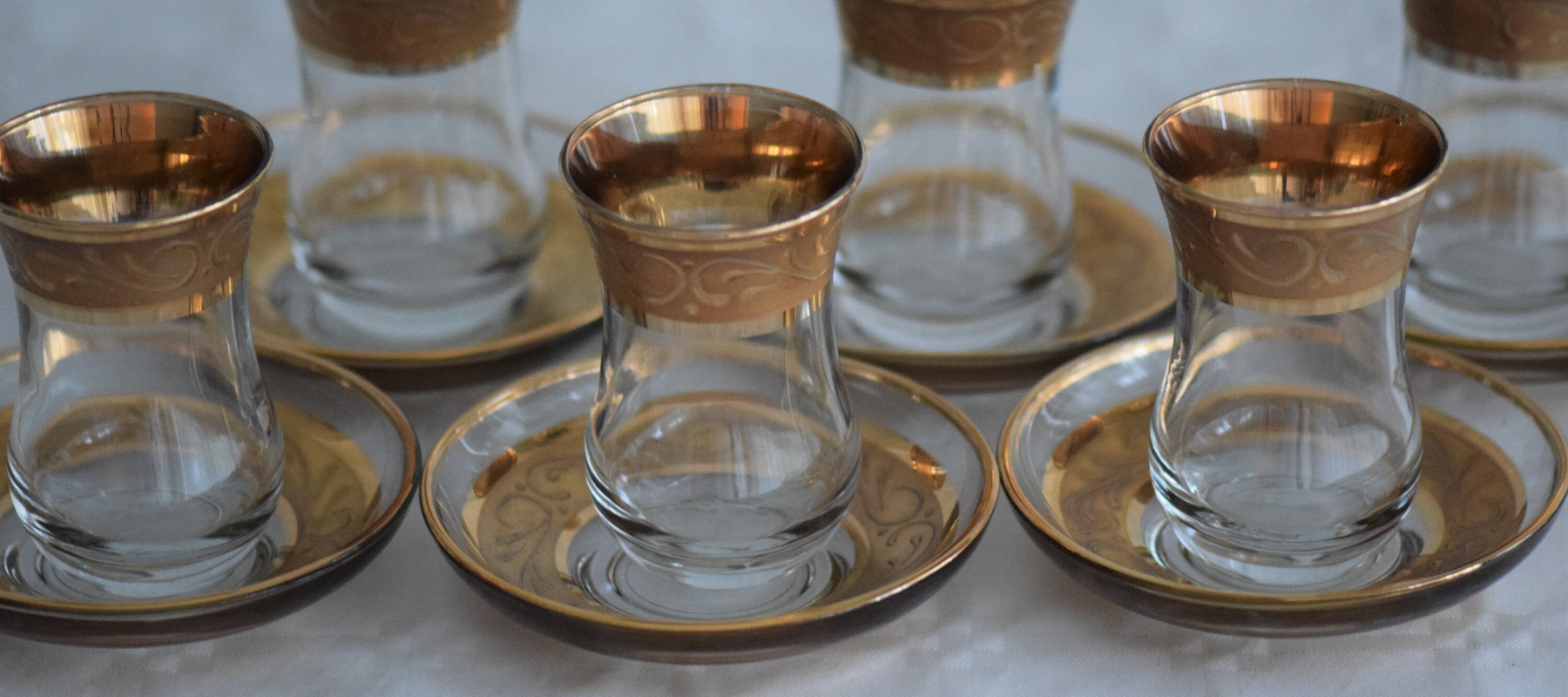
Turkish Tea Cups
What are tea cup sizes?
Tea cups come in various sizes and shapes to cater to different preferences and types of tea, from dainty ceramic cups used in formal tea ceremonies to larger cups for everyday use. The actual size of a standard tea cup may vary depending on regional and cultural differences:
Small Tea cups
Small Tea cups are tea cups size designed to serve the need to drink strong tea with the right amount of tea. A small cup of tea with a volume of about 2-3 ounces (60-90 ml) is suitable for sipping enjoying and relaxing. In traditional tea ceremonies, small cups of tea are always the top choice.

Small Tea cups can hold 60-90 ml of liquid
Medium Tea cups
Medium-sized tea cups are the favorite type of tea cup for most people around the world. Unlike small tea cups, which in standard size can hold about 6-8 ounces (180-240 ml) of liquid, medium-sized teacups is suitable for daily use.

Medium tea cup can hold 180-240 ml of liquid
Large Tea cups
If you like drinking tea but are afraid of insomnia, a Large Tea cup is the right tea cup size for you. Large teacups can come in a variety of sizes, starting at 10 ounces (300 ml) and going up to 16 ounces (475 ml) suitable for drinking diluted teas. Besides, this is also the ideal choice for those who like to be creative in preparing tea. Users can arbitrarily mix many types of toppings to satisfy their personal enjoyment needs.
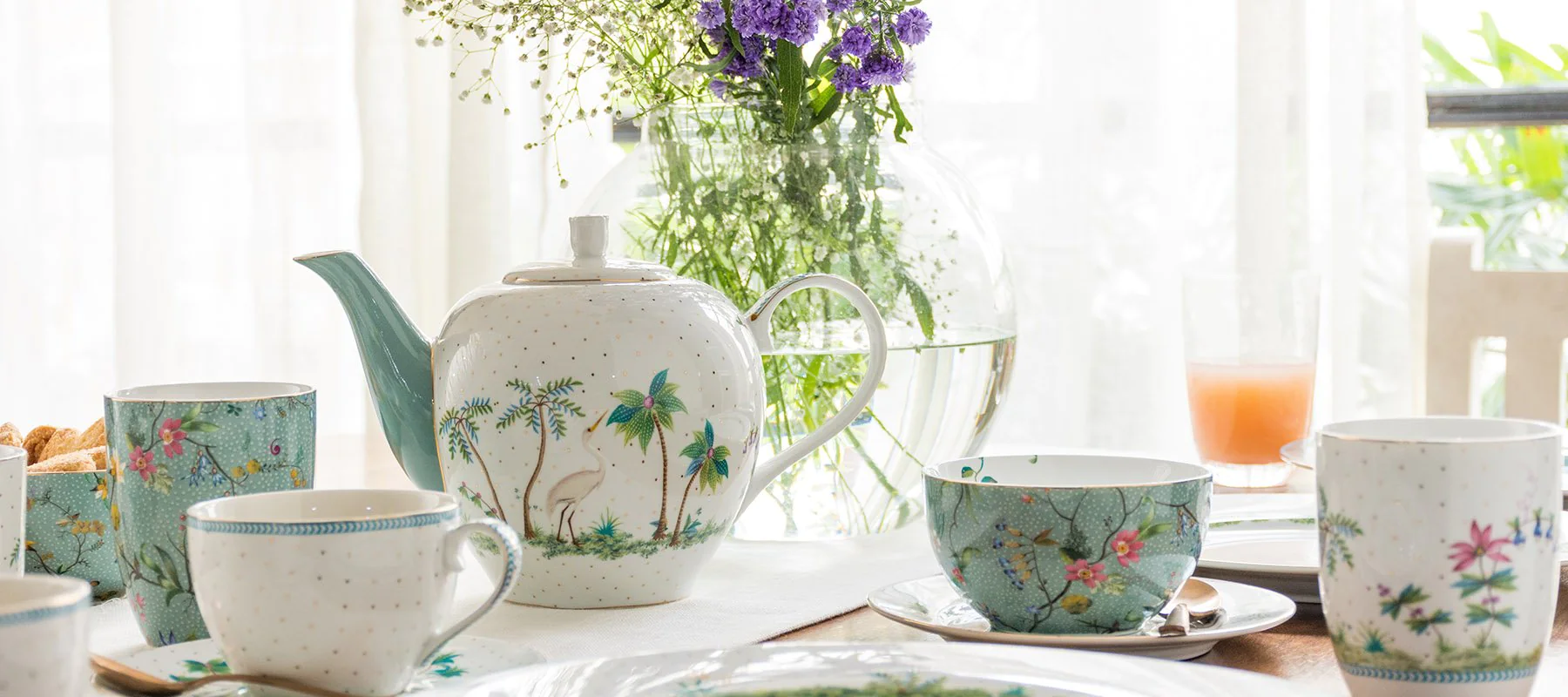
Large Tea cup can hold 300 ml of liquid
👍 Explore more: How Many Ounces in a Coffee Cup? A Quick Guide to Serving Sizes.
What are tea cups made of?
Along with the long-standing development of tea culture, tea cups have existed in many shapes, types and materials.
Ceramic
Ceramics are one of the top choices for producing tea cups. White clay fired at a temperature of 700 - 900 degrees Celsius is the main ingredient to produce ceramic tea cups. Some cups in the high-end segment will be partially glazed, fired at higher temperatures and meticulously finished. With sophisticated and sophisticated production methods, ceramic tea cups keep heat well, have enough insulation ability, and maintain fragrance for a long time.
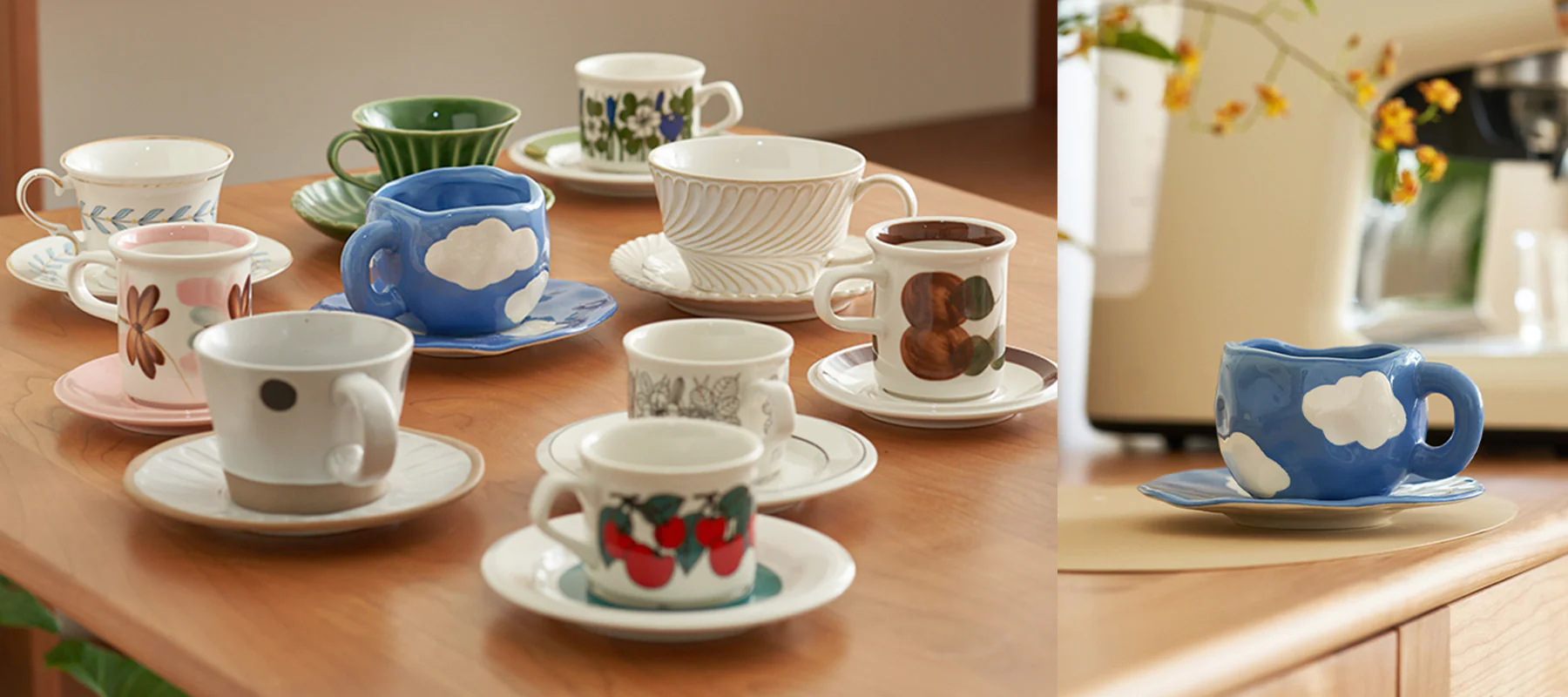
Ceramic cups
Porcelain
Porcelain tea cups are highly appreciated by many people for their elegance and sophistication. With a translucent, thin and light design, they give users a comfortable and relaxing feeling when enjoying tea. The biggest advantage of porcelain tea cups is that they retain heat well, making them a perfect choice for those who like to sip.
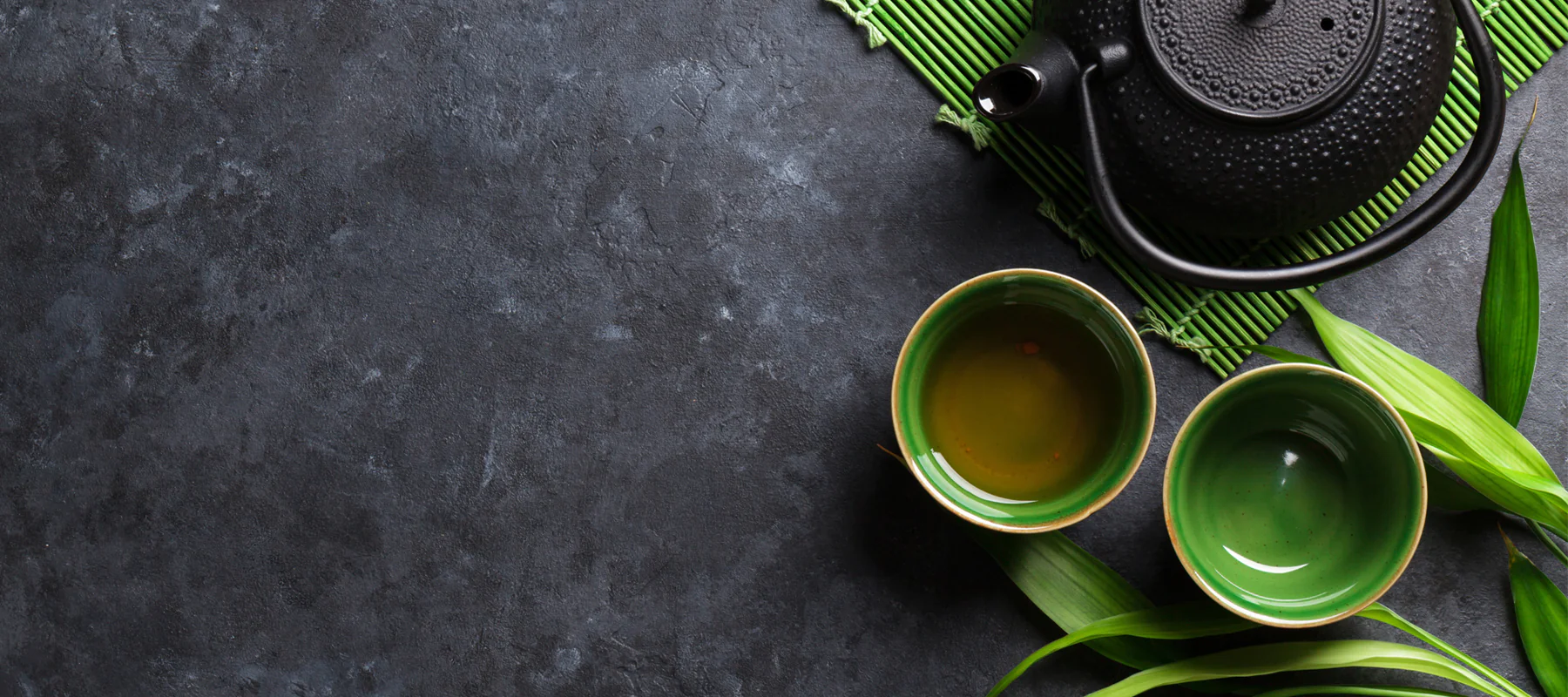
Porcelain cups
Glass
Glass is a popular material, second only to ceramic in making tea cups. Although the production method is like ceramic tea cups, glass cups have poorer heat retention and are more fragile. But in return, its advantages are transparent, neutral, and easy to clean. With a transparent appearance, glass tea cups will be suitable for colorful drinks and elaborate decorations.
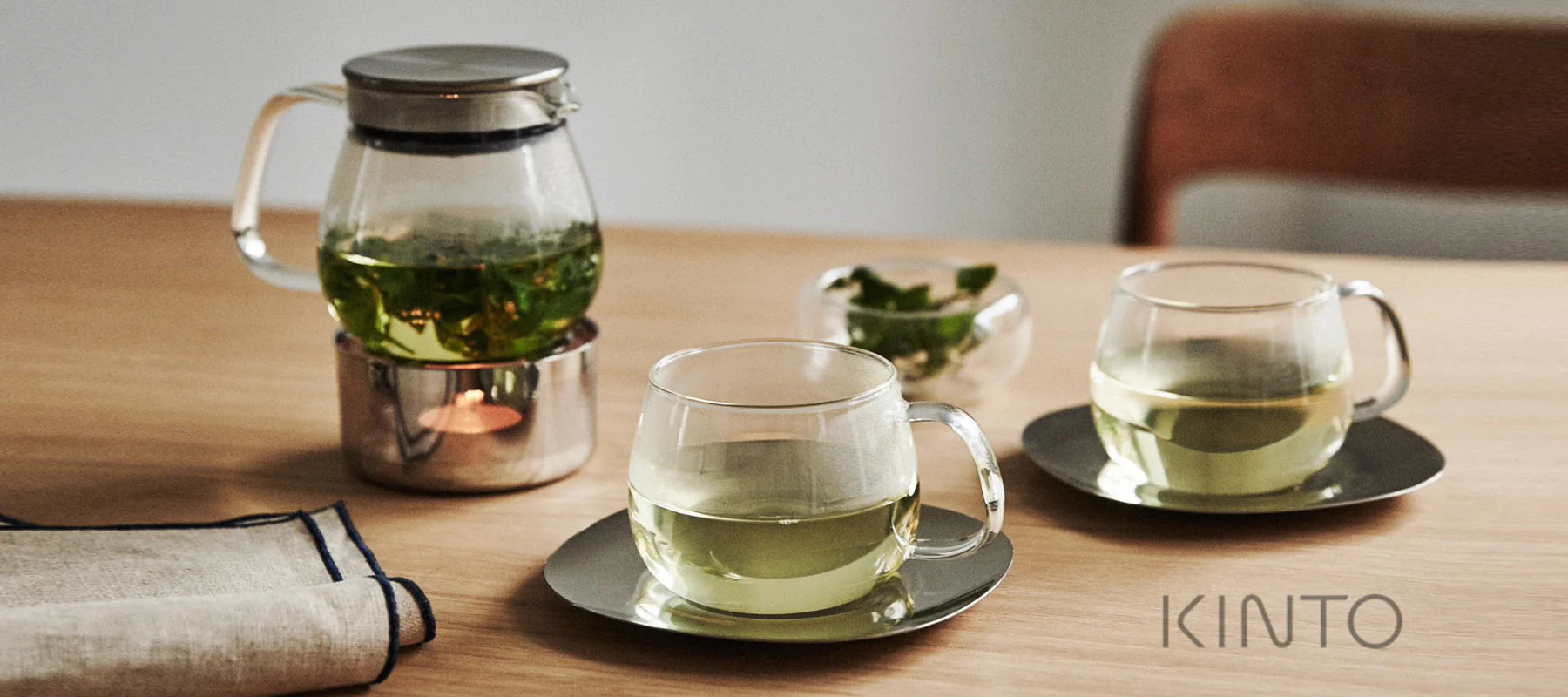
Glass tea cup
Silver
Silver - a precious material that seems far away in tea cup design. But nowadays, silver tea sets are becoming more and more popular among tea ceremony enthusiasts. With a shiny and luxurious appearance, the silver teacup gives users a unique and noble tea-drinking experience. One of the things to keep in mind when using a silver tea set is its thermal conductivity. This can make it more difficult to pour or sip tea while it is hot.
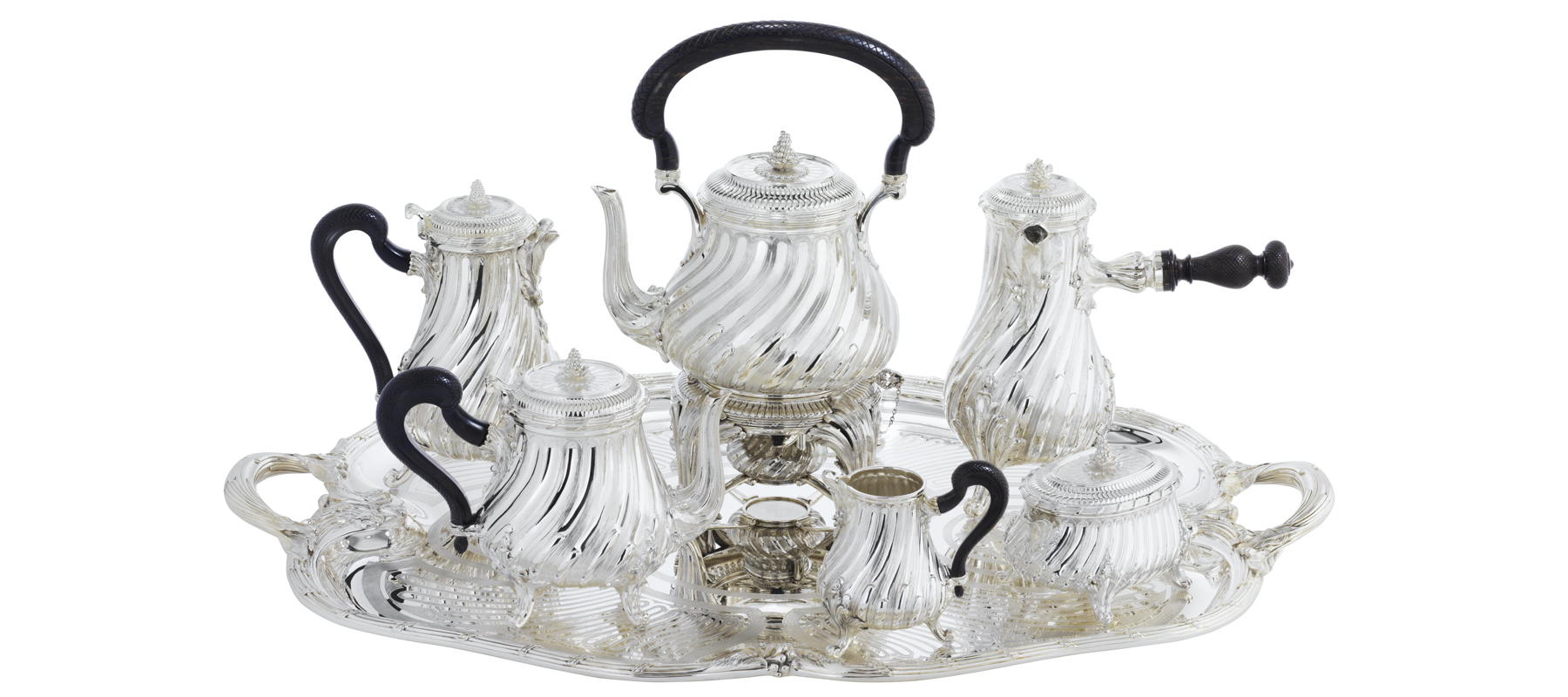
Silver tea cup
👍 Explore more: What Are the Best Mug Materials? Your Guide to Quality Drinkware.
How To Choose a Perfect Tea Cup?
Just as every Steve Jobs needs a Steve Wozniak, every cup of tea needs a cup to match it. Like the taste and aroma of tea leaves, the cup of tea also plays an important role in enhancing your tea-drinking experience. Whether you prefer an elegant porcelain tea cup or a unique silver cup, considerations of material, size, shape, and color are essential factors in choosing the perfect tea cup.
Material
If you are starting to learn about tea ceremony, porcelain and ceramic will be the top choice for you. With the ability to keep heat, and be durable and suitable for most types of tea, porcelain and ceramic are materials that ensure not disappoint you.
Consider trying a glass cup if you appreciate the authentic experience of observing the rich colors and delicate nuances of tea.
If you are a longtime tea ceremony enthusiast and like to collect, silver teacups are what you are looking for. But be careful when using it because when drinking tea from a silver cup, the smell of metal can affect and destroy the natural flavor of the tea.

Tea cups have variety materials
Size
The size of your tea cup also affects your tea-drinking experience. Choose small-sized cups if you love sipping and concentrated flavors. Larger cups allow you to mix your favorite flavors. From my perspective, a medium-sized cup of tea is a safe and optimal choice when you only buy it for personal needs, without any specific purpose or requirement.
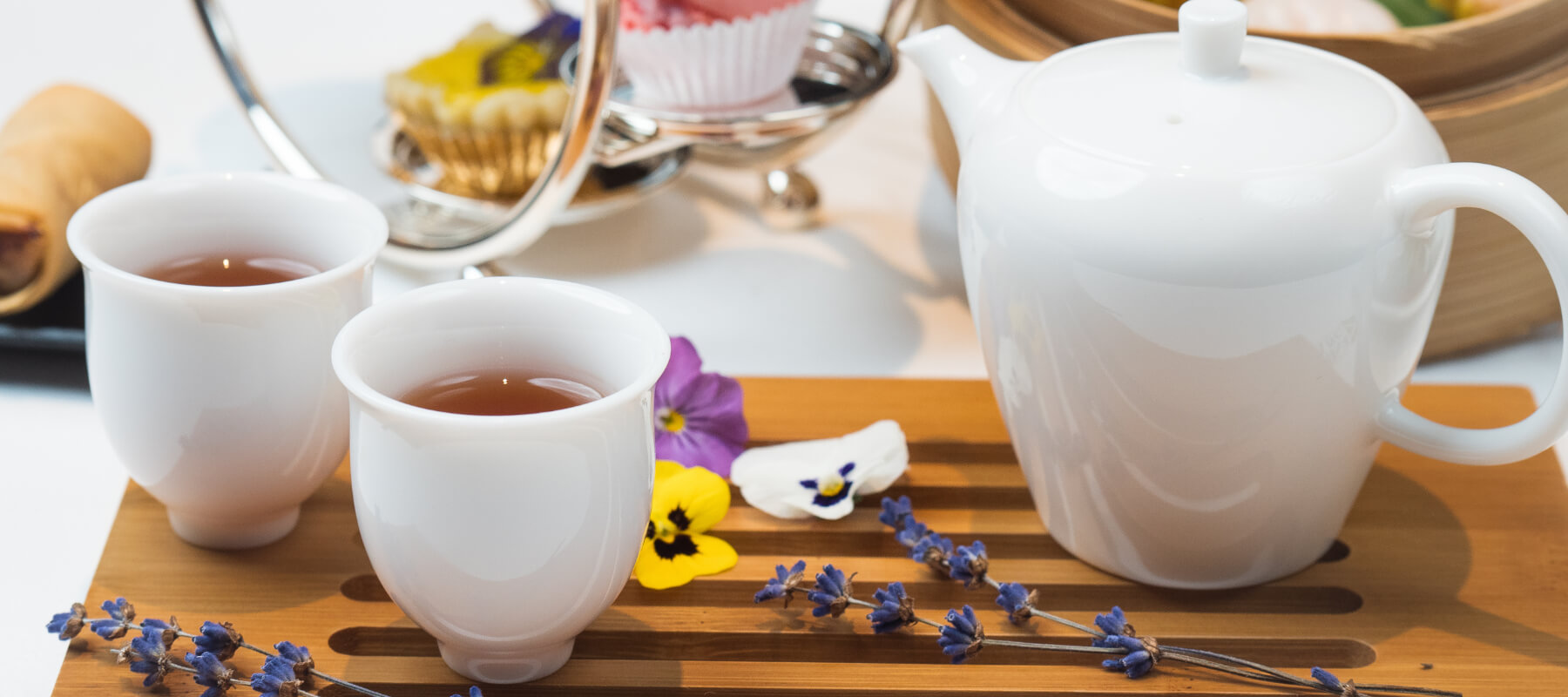
Choose the sizes of tea cups you want
👍 Explore more: Exploring Mug Sizes: Find the Perfect Cup for Your Beverage.
Shape and color
The color and shape of a teacup can enhance the visual and olfactory experience of enjoying tea. According to research, tea cups with neutral colors will highlight the color of the tea. White or colorless teacups are ideal for making herbal teas and colored teas. As for shape, buyers will tend to choose round cups with tapered edges if they want fragrant and cooler tea to use. Tall, narrow, lidded tea cups are suitable for keeping tea hot for a long time.
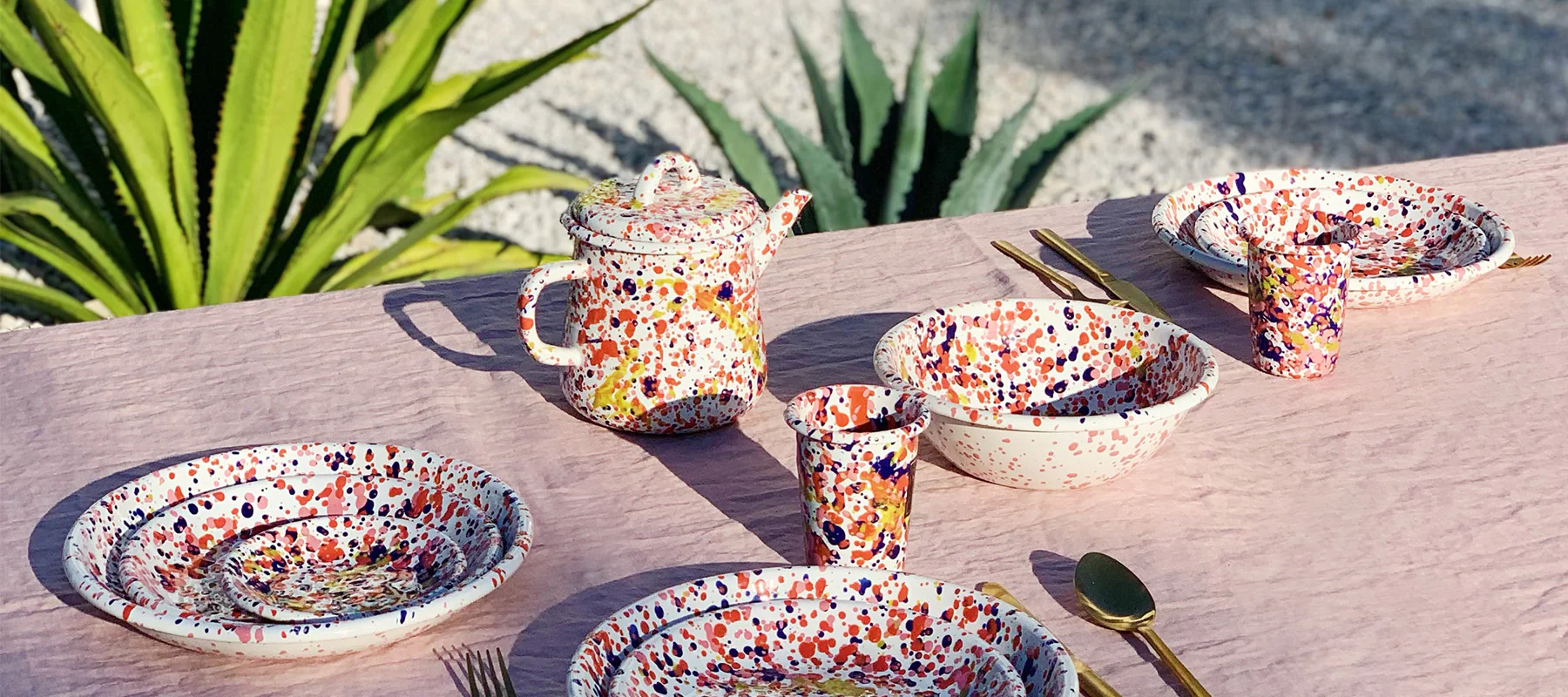
Choose the shape and the colors of teacup you want
Conclusion
In this article, we have explored the fascinating and captivating stories of the tea cup. The tea cup is not only a tea-making tool, but it is also the key to the world's rich and diverse tea culture. From the first teacup used in China to its stylish and modern designs, teacups have woven a rich historical tapestry, diverse in type and material that reflects the art, culture, and technology of each era. Whether you are looking for an elegant porcelain cup or a luxurious silver tea set, we hope this article will help you have a more enjoyable and new experience in enjoying tea.
You may aslo like:
👍 Coffee Cups: Discover the Perfect Vessel for Your Morning Brew.
👍 Mugs vs Cups: Which One Is Ideal for Your Morning Caffeine Fix?


















Leave a comment